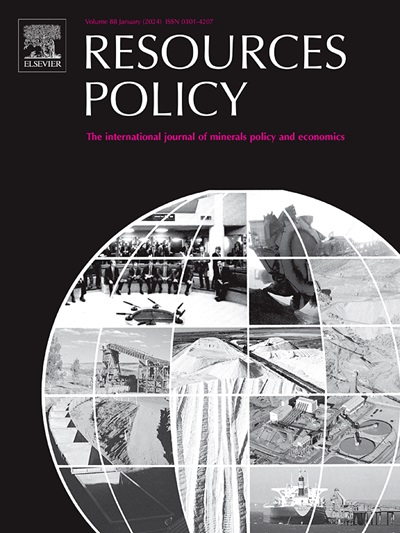人力和自然资本资源不对称可持续性效应的全球分析
IF 10.2
2区 经济学
0 ENVIRONMENTAL STUDIES
引用次数: 0
摘要
评估一个国家是否以及如何实现可持续增长仍然是环境和资源经济学中最具争议的问题之一。特别是,在现有文献中,对于人力资本和自然资本资源之间的可替代性(互补性)程度,特别是在存在空间溢出的情况下,没有明确的经验共识。这个具有挑战性的问题需要进一步的理论和实证见解。为了推进和突出正在进行的辩论,我们使用了1995-2018年期间124个国家的样本,并利用不对称误差修正模型(AECM)和不对称空间误差修正模型(ASpECM)来探索两种资本形式之间的可替代性程度。实证结果揭示了人力资本和自然资本之间的短期不对称行为,这在两种类型的模型(空间和非空间)中都很明显。值得注意的是,当自然资本增加时,互补性关系似乎很明显。然而,当自然资本减少时,这一结果是相反的,这表明两种形式的资本是替代的。最后,我们发现,如果考虑到空间依赖性的存在,非空间模型中长期对称性的存在体现了一种强烈的偏差,这意味着人力资本对其与自然资本的长期平衡的负偏离比正偏离的调整更快。本文章由计算机程序翻译,如有差异,请以英文原文为准。
A global analysis of asymmetric sustainability effects of human and natural capital resources
Assessing whether and how a country is achieving sustainable growth remains one of the most controversial issues in environmental and resource economics. In particular, there is no clear empirical consensus in the existing literature on the degree of substitutability (complementarity) between human and natural capital resources, especially when spatial spillovers are present. This challenging issue calls for further theoretical and empirical insights. To advance and highlight the ongoing debate, we use a sample of 124 countries for the period 1995–2018 and utilise both an Asymmetric Error Correction Model (AECM) and an Asymmetric Spatial Error Correction Model (ASpECM) to explore the degree of substitutability between the two forms of capital. The empirical findings unveil a short-run asymmetric behaviour between human and natural capital which is evident in both types of models (spatial and non-spatial). It is noteworthy that a complementarity relationship appears to be evident when natural capital increases. However, this result is reversed when natural capital decreases, indicating that the two forms of capital are then substitutes. Finally, we find that the existence of long-run symmetry in the non-spatial model embodies a strong bias, if we take account of the existence of spatial dependence, meaning that human capital adjusts more rapidly in response to a negative deviation from its long-run equilibrium with natural capital than to a positive deviation.
求助全文
通过发布文献求助,成功后即可免费获取论文全文。
去求助
来源期刊

Resources Policy
ENVIRONMENTAL STUDIES-
CiteScore
13.40
自引率
23.50%
发文量
602
审稿时长
69 days
期刊介绍:
Resources Policy is an international journal focused on the economics and policy aspects of mineral and fossil fuel extraction, production, and utilization. It targets individuals in academia, government, and industry. The journal seeks original research submissions analyzing public policy, economics, social science, geography, and finance in the fields of mining, non-fuel minerals, energy minerals, fossil fuels, and metals. Mineral economics topics covered include mineral market analysis, price analysis, project evaluation, mining and sustainable development, mineral resource rents, resource curse, mineral wealth and corruption, mineral taxation and regulation, strategic minerals and their supply, and the impact of mineral development on local communities and indigenous populations. The journal specifically excludes papers with agriculture, forestry, or fisheries as their primary focus.
 求助内容:
求助内容: 应助结果提醒方式:
应助结果提醒方式:


